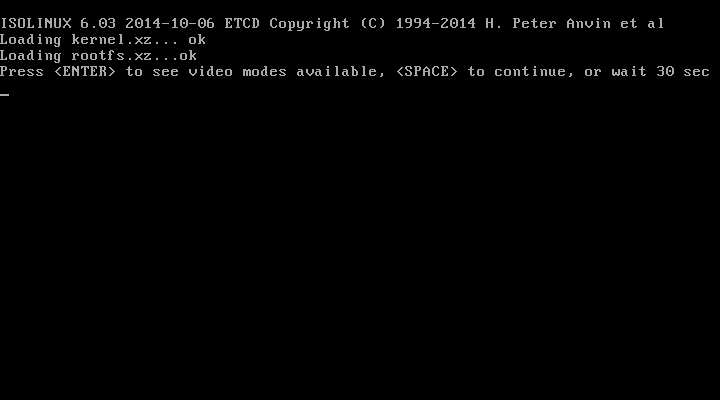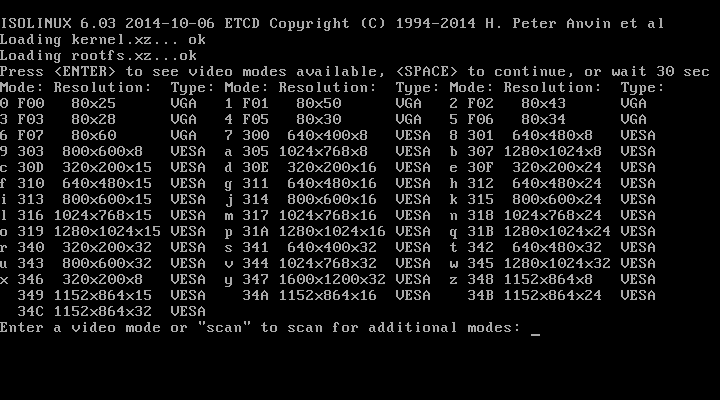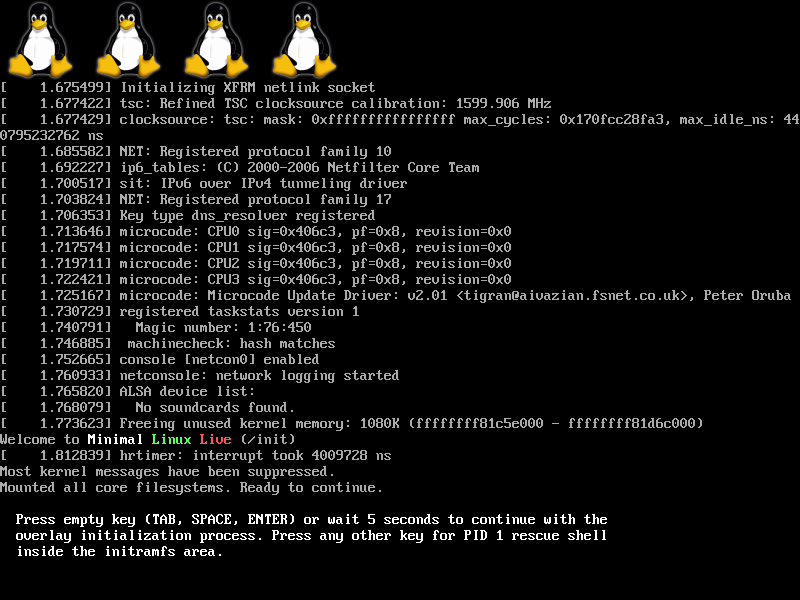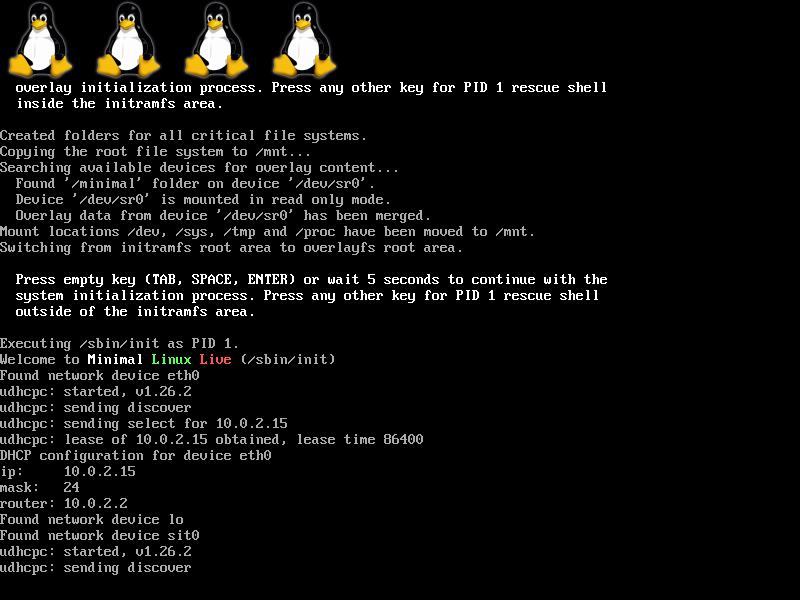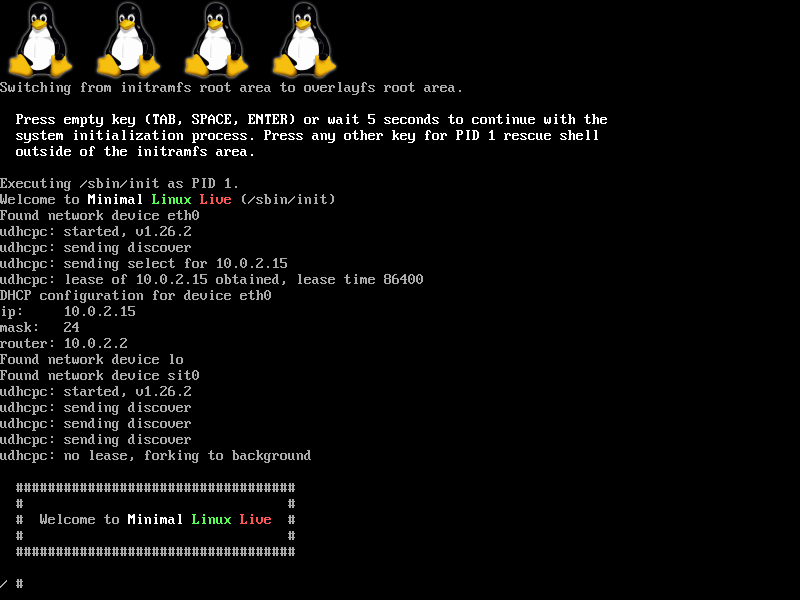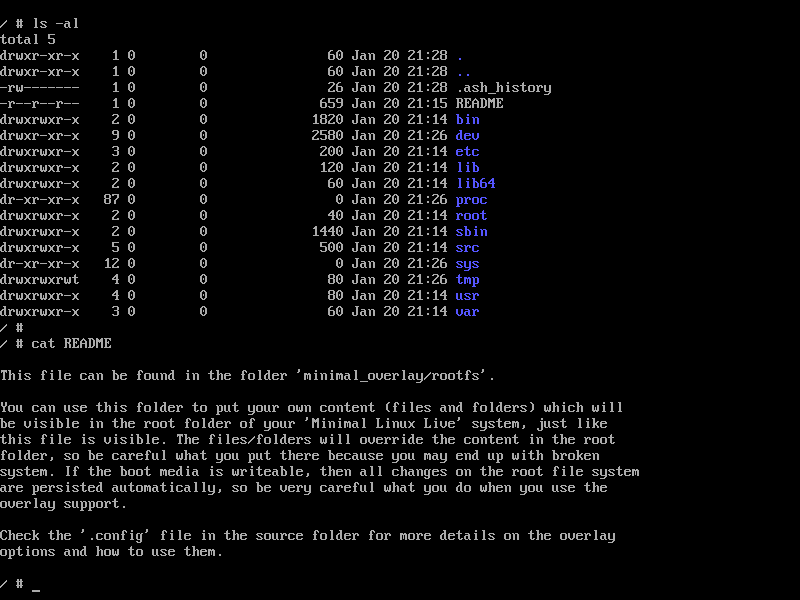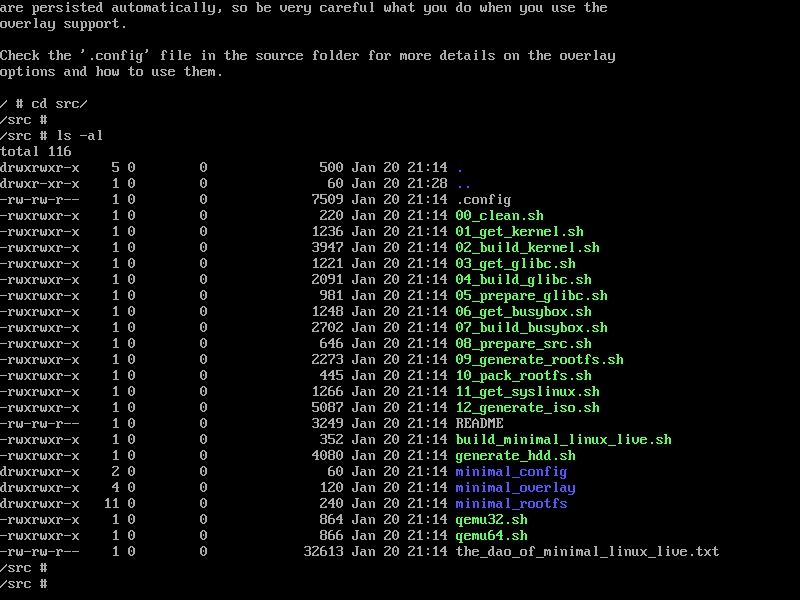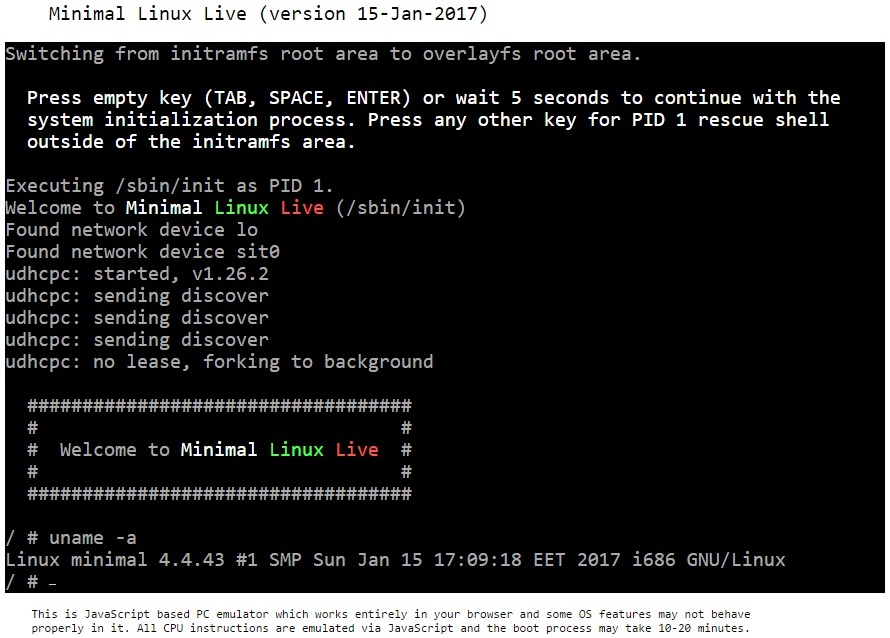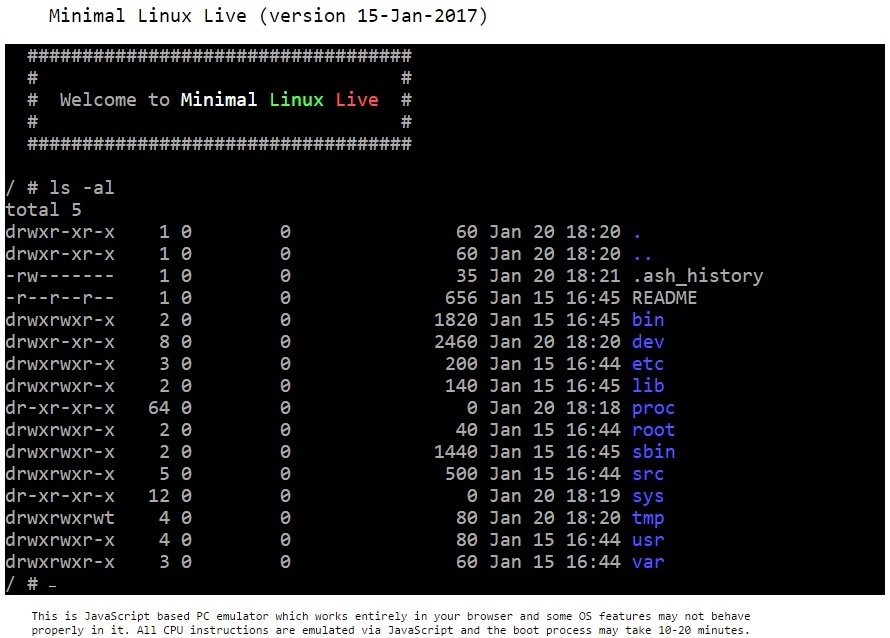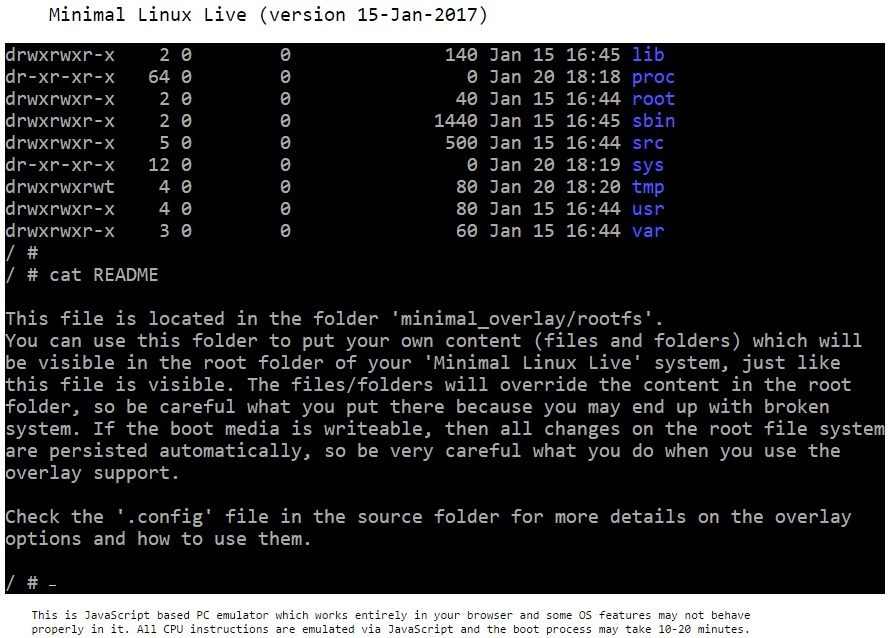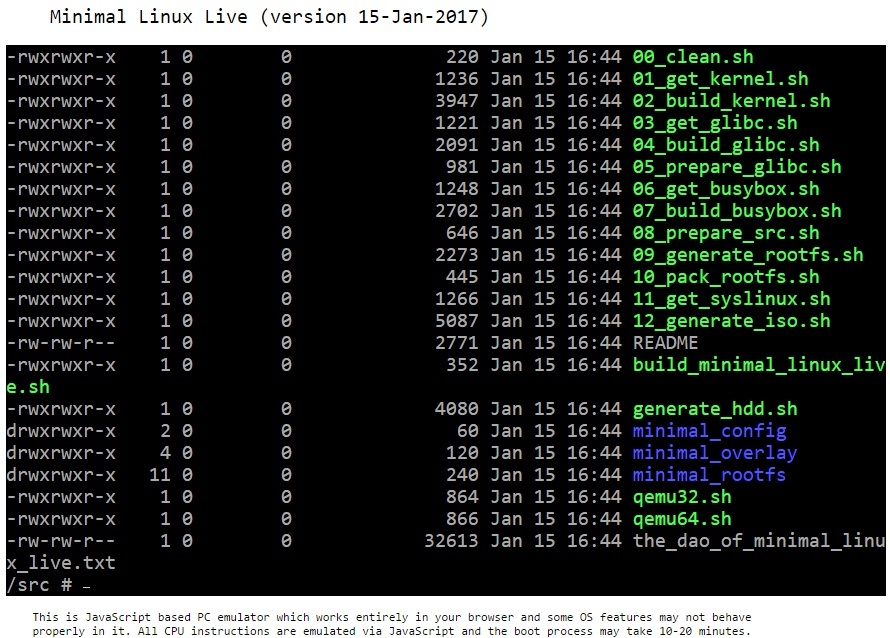Home
Minimal Linux Live is a tiny Linux distribution, which is designed to be built from scratch by using a collection of automated shell scripts. Minimal Linux Live offers a core environment with just the Linux kernel, GNU C library and BusyBox userland utilities. Additional software can be included in the ISO image at build time by using a well-documented configuration file. Minimal Linux Live can be downloaded as a pre-built image, built from scratch or run in a web browser by using a JavaScript PC emulator.
Steps to follow if you want to build your own Minimal Linux Live ISO image file:
- Get the latest source code archive from the download section.
- Extract the source code archive. Note that even though the extracted scripts are relatively small in size (~1MB), you need ~2GB free disk space for the actual build process.
-
Resolve the build dependencies (e.g. GCC, make, etc.). On Ubuntu you can use the following command:
sudo apt install wget make gawk gcc bc xorriso - Execute the script build_minimal_linux_live.sh and get some coffee. The whole build process should take less than 30 minutes on a modern computer.
- In the end you will find the generated ISO image file minimal_linux_live.iso in the same folder where you started the build process.
The default build process for version xx-Jan-2018 generates ~9MB ISO image, but you can make the ISO image even smaller (~7MB) if you exclude the default overlay bundles from the main .config file.
If your build fails for some reason, most probably there are unresolved build dependencies. Please have in mind that the build dependencies can vary a lot depending on the Linux OS that you use and the software that you have already installed. If you still have troubles, you should be able to identify the failing script from the console output. You may find it useful to enable "debug" logging in the failing shell script like this:
set -ex. Manually run the failing script and identify the failing part. If you are unable to find a solution to your problem, then you can ask someone more experienced Linux guy around you or as alternative you can submit an issue.
You can run the ISO image in virtual machine, e.g. QEMU, VirtualBox or VMware Workstation Player (free for non-commercial use). You can also burn the ISO image file on CD/DVD or on USB flash device by issuing
dd if=minimal_linux_live.iso of=/dev/xxx where /dev/xxx is your USB flash device.
The generated ISO image file contains Linux kernel, GNU C library compiled with default options, BusyBox compiled with default options, quite simple initramfs structure and some "overlay bundles" (the default build process provides few overlay bundles). You don't get Windows support out of the box, nor you get any fancy desktop environment. All you get is a simple shell console with default BusyBox applets, network support via DHCP and... well, that's all. This is why it's called "minimal".
Note that by default Minimal Linux Live provides support for legacy BIOS systems. You can change the build configuration settings in the .config file and rebuild MLL with support for modern UEFI systems.
All build scripts are well organized and quite small in size. You can easily learn from the scripts, reverse engineer the build process and later modify them to include more stuff (I encourage you to do so). After you learn the basics, you will have all the necessary tools and skills to create your own fully functional Linux based operating system which you have built entirely from scratch.
You are encouraged to read the tutorial which explains the MLL build process. The same tutorial, along with all MLL source code, can be found in the ISO image structure in the /minimal/rootfs/usr/src directory.
Below you can find several screenshots form version 20-Jan-2017 which demonstrate what the MLL environment looks like.
